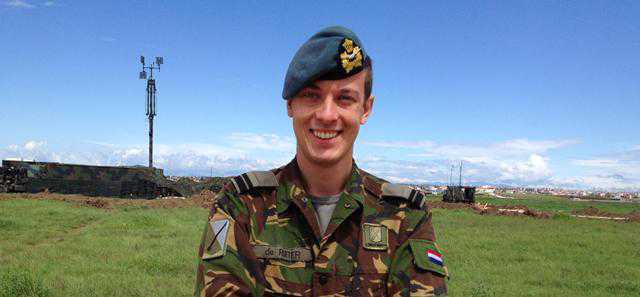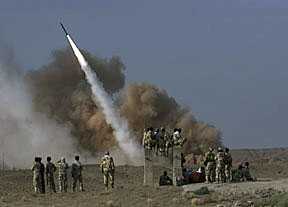As Iran develops technologies associated with ballistic and cruise missiles, neighbouring Turkey faces an emerging security threat.
By Aaron Stein for Southeast European Times in Istanbul – 05/07/11
”]![AARONphoto Iran has developed a large ballistic and cruise missile capability. [Reuters]](https://www.turkishnews.com/en/content/wp-content/uploads/2011/07/AARONphoto.jpg) Recent war games in Iran have again attracted attention to the significant resources the Islamic Republic is devoting to extending the range of its current stockpile of ballistic missiles and the development of cruise missiles to overcome existing ballistic missile defences (BMD).
Recent war games in Iran have again attracted attention to the significant resources the Islamic Republic is devoting to extending the range of its current stockpile of ballistic missiles and the development of cruise missiles to overcome existing ballistic missile defences (BMD).
“Iran’s long-range missiles have been worrying Ankara for more than a decade,” Sebnem Udum, an associate professor of international relations at Hacettepe University, told SETimes, adding that ballistic missile defence (BMD) has become more important for Turkey’s future defence plans.
At the same time, “Ankara does not want to send the wrong signals to Iran,” she says.
For this reason, Turkey objected to the naming of Iran and Syria as specific threats to the Alliance during negotiations with its NATO Allies in 2010, out of concern it would actually spur both Iran and Syria to speed up their missile programmes.
The Turkish leadership “aims to solve problems within a ‘co-operative security’ framework based on talks, improved relations, and trade”, Udum says.
NATO eventually agreed to remove Iran and Syria from its final declaration of specific threats and, as part of this compromise, Turkey agreed to host one radar installation for the Alliance’s missile defence shield.
Despite agreeing to the shield, Ankara has shown it is intent on pursuing an independent BMD capability.
The proposed independent BMD system has potential drawbacks, however, according to Dennis Gormley, a security studies professor at the University of Pittsburgh and author of “Missile Contagion”.
“Turkey might not have access to ballistic missile warning information, as well as the benefits of working with NATO partners in training on tactics and procedures related to perfecting missile defence operations,” he told SETimes.
According to Gormley, neither Turkey nor NATO should focus on ballistic missiles at the expense of guarding against other risks. “The threat of land-attack cruise missiles is also growing and is much more demanding than that of defending against aircraft,” he said.
Cruise missiles are essentially small-unmanned aircraft designed for offensive missions. Their low trajectory, terrain masking capabilities and 360-degree route of attack make it difficult for current BMD sensors to track and identify these targets. Despite having a theoretical capability to intercept low-flying cruise missiles, “significant improvements are needed in airborne sensors and radar data sharing to provide defence,” Gormley said.
Iran is known to have imported 18 Kh-55 cruise missiles with a range of 3,000km in 2001, and is developing a cruise missile based on the Chinese Silkworm that could conceivably carry a well-designed nuclear warhead 105km, according to the Nuclear Threat Initiative.
Turkey has not announced any plans to defend against the growing threat of cruise missiles, choosing to focus solely on ballistic missiles.
Advanced fighter jets, like the F-35 Joint Strike Fighter, have some capability to defend against cruise missiles, but improvements are needed to adequately defend against a cruise missile attack.
According to Gormley, “the F-35’s active electronically scanned array (AESA) radar could track low-flying cruise missiles.” If equipped with advanced medium range air-to-air missiles, “they could destroy such missiles, including the Kh-55 and Ra’ad,” he said.
Turkey is a member of the US-led consortium building the plane and has indicated a willingness to buy 100 F-35s over the next 15 years.
While such a capability would be good for small volume attacks, the limited range of the plane’s radar would present problems for larger attacks, says Gormley.
This content was commissioned for SETimes.com.
via Turkey in a quandary over missile threat (SETimes.com).



